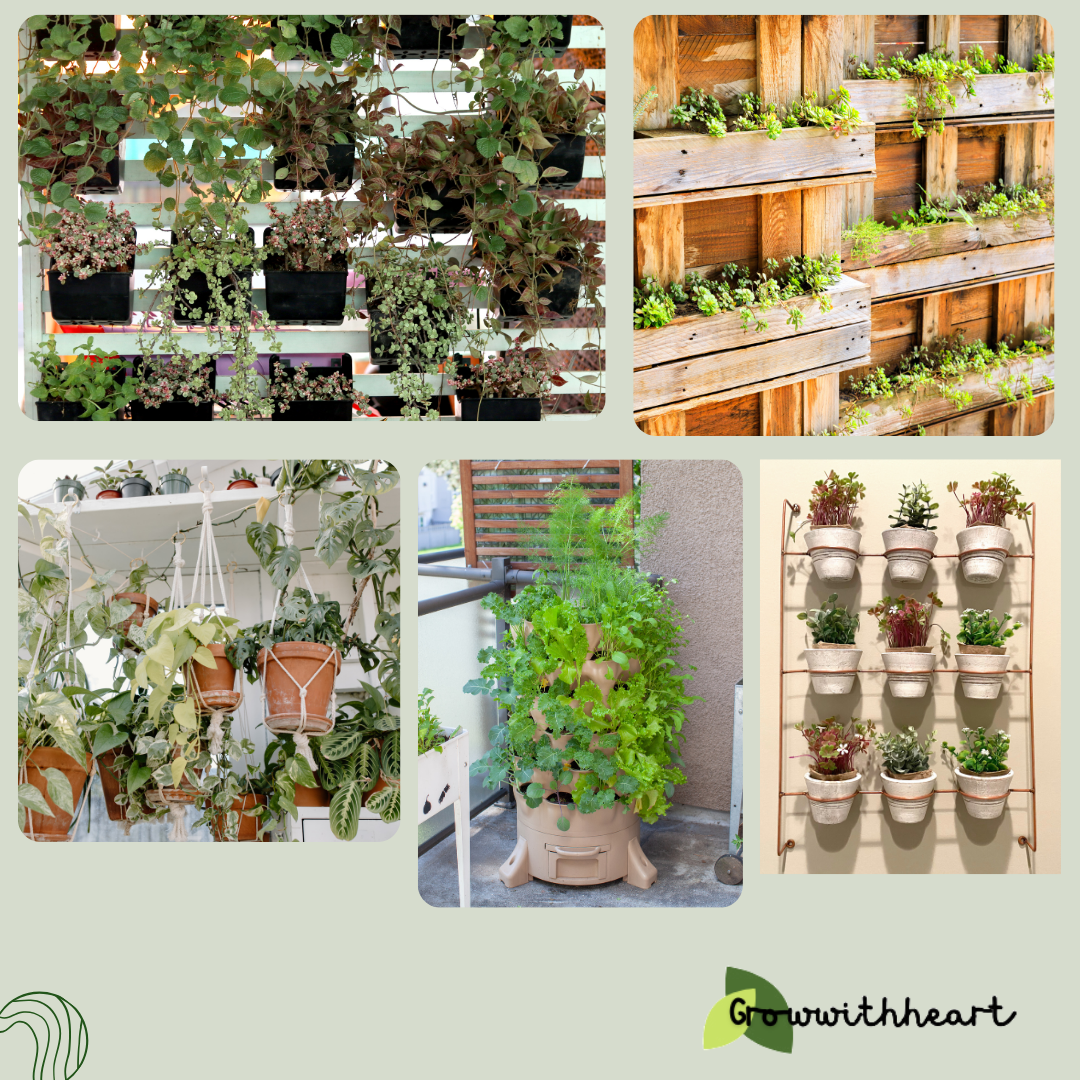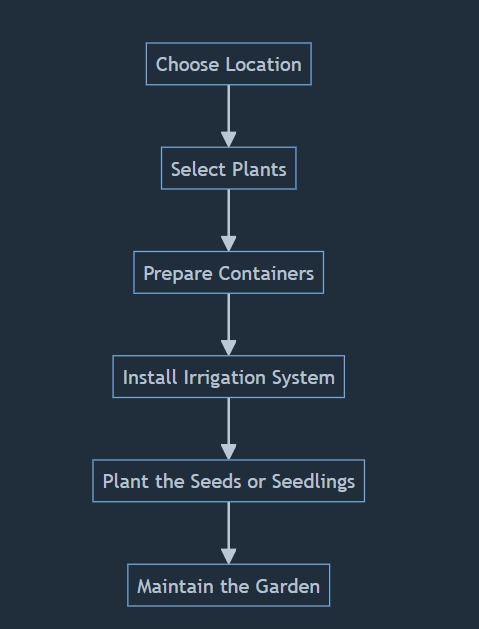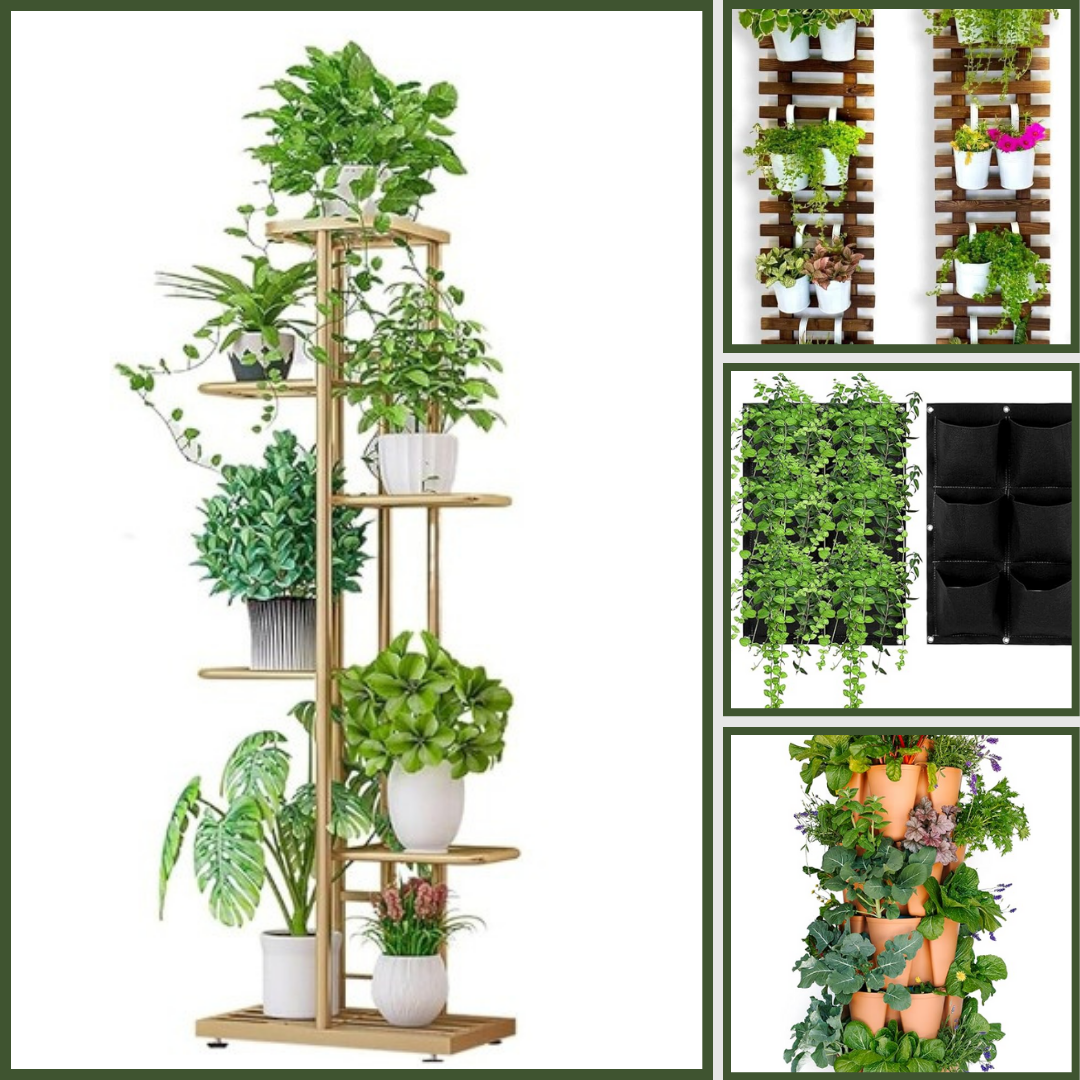Vertical gardens transforms our approach by making the most of vertical space to grow plants. This innovative method offers numerous benefits, from maximizing limited space to enhancing urban environments with urban gardening.
Let’s delve into how vertical gardening is changing how we grow and why it has become a popular choice for modern gardeners.
Introduction to Vertical Gardening
Vertical gardening involves growing plants on vertically suspended panels or structures. This method is particularly useful in urban areas where horizontal space is limited.
By utilizing walls, fences, and specially designed structures, gardeners can cultivate a wide variety of plants in a small footprint.
Benefits of Vertical Gardening

1. Space Efficiency
One of the most significant advantages of vertical gardening is space efficiency. In urban environments, space is often at a premium.
Vertical gardens allow people to grow plants in places where traditional gardens wouldn’t be possible, such as balconies, patios, and small yards.
By going vertical, gardeners can maximize their available space and enjoy the benefits of gardening without needing a large plot of land.
2. Improved Air Quality
Plants are natural air purifiers. They absorb carbon dioxide and release oxygen, improving air quality.
Vertical gardens can enhance this effect by increasing the number of plants in a given area. In cities, where pollution levels are often high, vertical gardens can play a crucial role in providing cleaner air.
3. Aesthetic Appeal
Vertical gardens add a unique and attractive element to any space. They can transform dull, boring walls into vibrant, green landscapes.
This aesthetic appeal makes vertical gardens popular in both residential and commercial settings.
Restaurants, offices, and hotels often use vertical gardens to create visually stunning and inviting environments.
4. Thermal Insulation
Plants in vertical gardens can act as natural insulators. They can help regulate temperatures by providing shade in the summer and retaining heat in the winter.
This can lead to energy savings by reducing the need for air conditioning and heating.
5. Urban Agriculture
Vertical gardening promotes urban agriculture by allowing city dwellers to grow their own food.
Fresh herbs, vegetables, and fruits can be grown in vertical gardens, reducing the need for transportation and packaging.
This not only provides fresh produce but also reduces the carbon footprint associated with food distribution.
Types of Vertical Gardens

1. Living Walls
Living walls, also known as green walls, are one of the most common forms of vertical gardening.
These walls are covered with a variety of plants, often using a modular system that holds the plants in place.
Living walls can be installed indoors or outdoors and are popular for their aesthetic appeal and air-purifying qualities.
2. Trellises
Trellises are traditional forms of vertical gardening. They use structures to support climbing plants such as ivy, roses, and beans.
These structures can be made from wood, metal, or plastic and are often used in gardens and patios to create beautiful and functional plant displays.
3. Vertical Planters
➡️Top 5 vertical planters for your vertical garden!
Vertical planters are specially designed containers that allow plants to grow vertically.
These planters can be hung on walls or placed on stands. They come in various shapes and sizes, making them suitable for different types of plants, from small herbs to larger flowers and vegetables.
4. Hydroponic Vertical Gardens
Hydroponic vertical gardens use nutrient-rich water instead of soil to grow plants.

This method is highly efficient and can produce high yields in a small space. Hydroponic systems are often used in urban farming and commercial agriculture due to their productivity and sustainability.
Setting Up a Vertical Garden

1. Choosing the Right Location
The first step in setting up a vertical garden is choosing the right location. Consider factors such as sunlight, wind exposure, and accessibility.
Most plants require at least six hours of sunlight per day, so choose a spot that receives adequate sunlight.
2. Selecting Plants
Not all plants are suitable for vertical gardening. Choose plants that are well-suited to growing vertically, such as climbers, vines, and small-rooted plants.
➡️Here is how to choose the right plants!
Consider the climate and conditions of your area when selecting plants to ensure they thrive in your vertical garden.
3. Preparing the Structure
Prepare the structure for your vertical garden. This may involve installing a trellis, building a wall-mounted planter, or setting up a hydroponic system.
Ensure the structure is sturdy and can support the weight of the plants and growing medium.
4. Planting and Maintenance
Once the structure is ready, plant your chosen plants. Arrange them in a way that maximizes space and light exposure. Regular maintenance is crucial for the health of your vertical garden.
Water the plants as needed, provide nutrients, and prune them to encourage healthy growth.
Challenges of Vertical Gardening
1. Watering

Watering can be challenging in vertical gardens, especially in taller structures. Water may not evenly reach all plants, leading to inconsistent moisture levels. Consider using a drip irrigation system to ensure even watering.
2. Plant Selection
➡️Here is how to choose the right plants!
Not all plants thrive in vertical gardens. Some plants may struggle to adapt to vertical growing conditions. Research and select plants that are well-suited to vertical gardening to ensure success.
3. Structural Stability
Vertical gardens require sturdy structures to support the weight of plants, soil, and water. Ensure your structure is well-built and can handle the load. Regularly check for any signs of wear or damage.
4. Pests and Diseases
➡️how to protect your vertical garden from pests naturally!

Vertical gardens can be susceptible to pests and diseases. Monitor your plants regularly for any signs of infestations or health issues. Use organic pest control methods to keep your garden healthy.
Future of Vertical Gardening:
1. Technological Advancements
As technology advances, vertical gardening is likely to become even more efficient and accessible.
Innovations in hydroponics, automated watering systems, and smart gardening technologies will make vertical gardening easier and more productive.
2. Sustainability
Vertical gardening aligns with sustainable living practices. By growing food locally and reducing the need for transportation and packaging, vertical gardens contribute to a more sustainable food system.

This trend is expected to continue as people become more conscious of their environmental impact.
3. Integration in Urban Planning
Urban planners are increasingly incorporating green spaces into their designs. Vertical gardens are becoming a key element in urban planning, providing both aesthetic and environmental benefits.
As cities grow, vertical gardens will play a vital role in creating healthier and more livable urban environments.
Conclusion
Vertical gardening is revolutionizing the way we grow plants by making the most of vertical space.
Its numerous benefits, including space efficiency, improved air quality, and aesthetic appeal, make it an attractive option for urban environments.
With various types of vertical gardens to choose from and advancements in technology, the future of vertical gardening looks promising.
Whether you’re a city dweller with limited space or someone looking to enhance your gardening experience, vertical gardening offers a sustainable and innovative solution for modern gardening needs.

